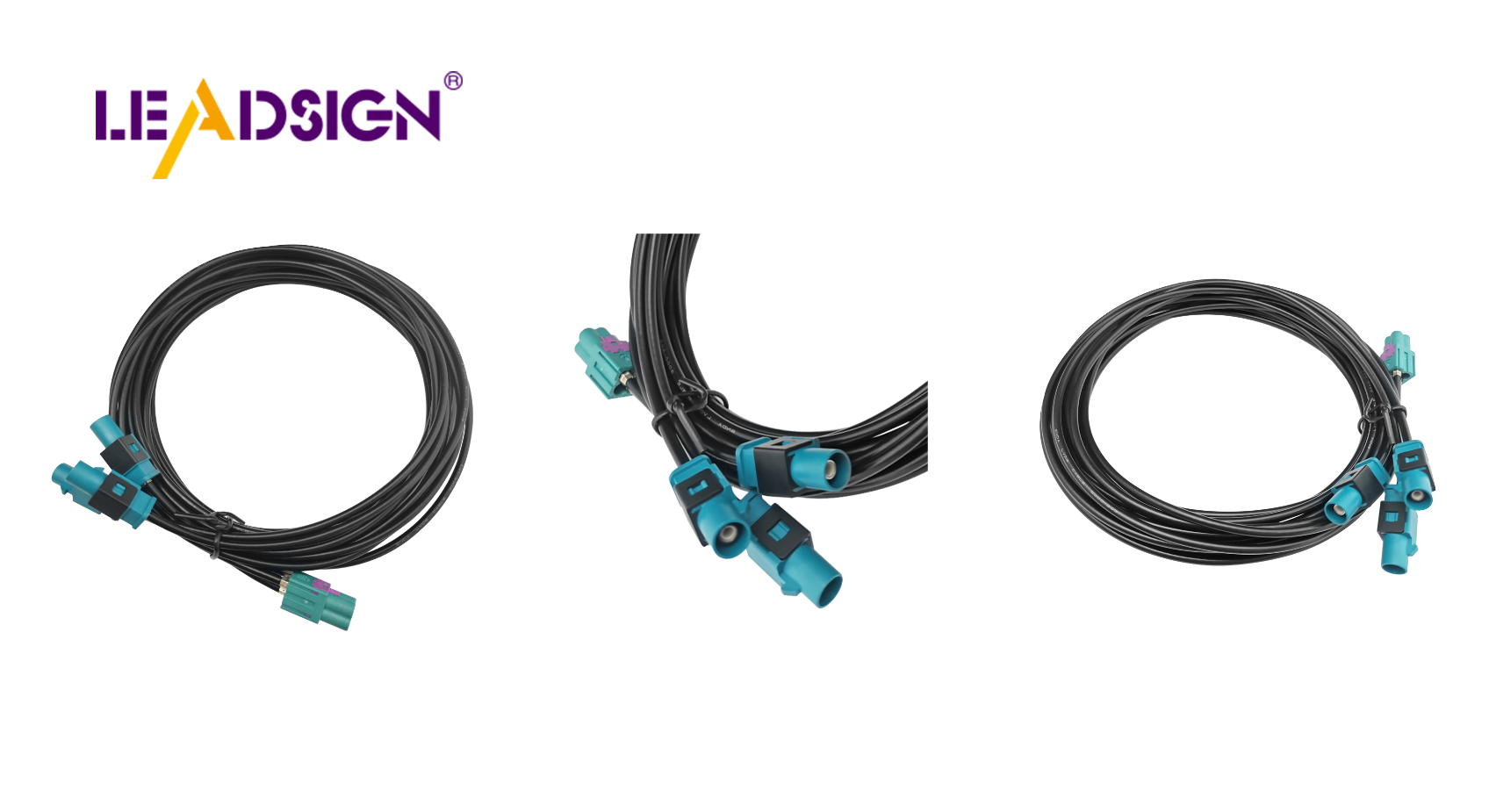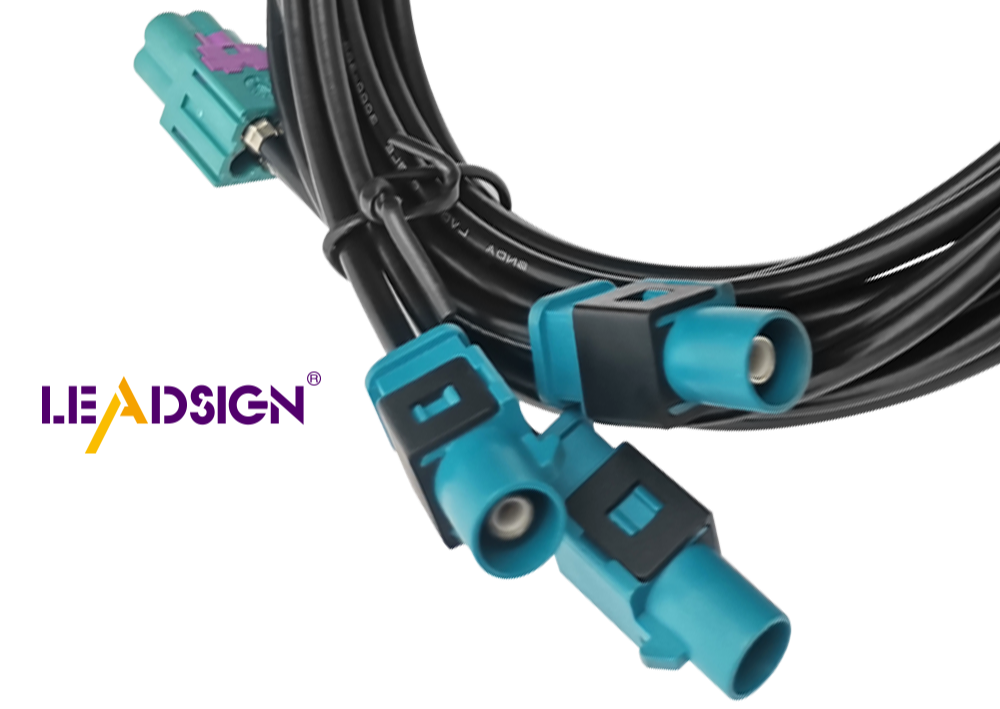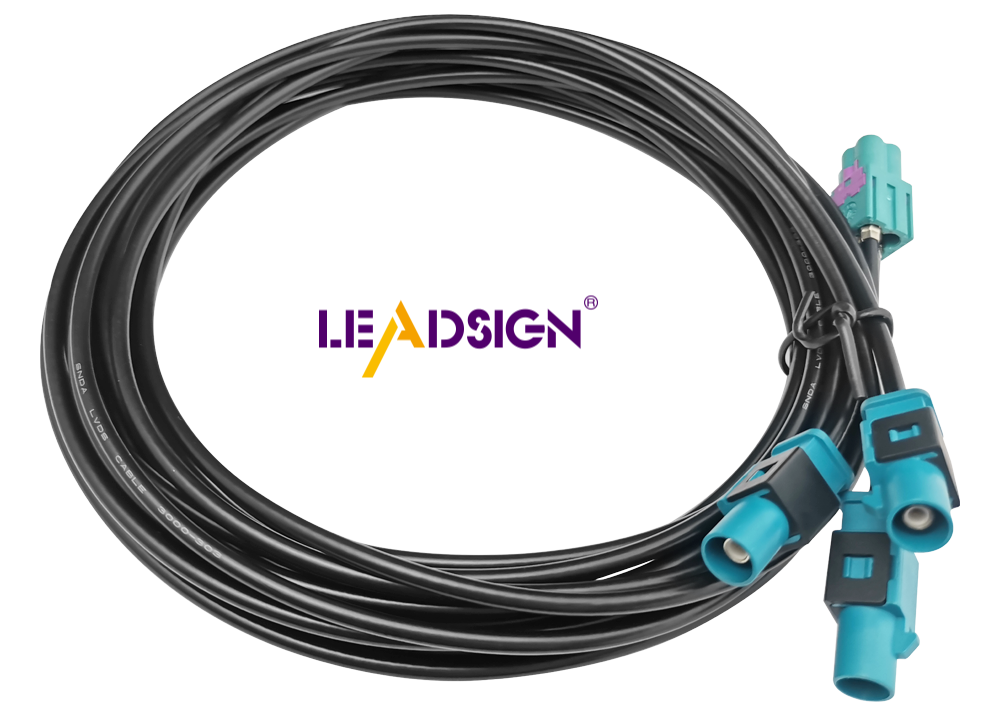Car Wire Connector Types Explained

Automotive wiring connector types are crucial for your car's electrical systems. They facilitate communication between devices, enhancing the longevity of the systems. Reliable connectors are essential for easy maintenance of car wiring. Additionally, they play a key role in ensuring the safety of vehicles by maintaining secure connections within circuits. With the evolving automotive technology, a variety of automotive wiring connector types are required to meet the changing needs of modern cars. This highlights the significant role they play in today's automotive industry.
Basics of Car Wire Connectors
Definition and Purpose
What are wire connectors?
Wire connectors are important parts of a car's electric system. They link circuits together to send signals smoothly. These small parts help your car's electronics work well. By holding wires tightly, they stop electric problems and keep systems running right.
Why are they essential in cars?
In cars, wire connectors are very important. They make sure systems work properly by keeping connections strong. Without them, you might have many electric problems that can be unsafe. Wire connectors also make fixing and upgrading easy without much rewiring. They help keep your car's electric systems strong and reliable.
Materials and Design
Common materials used
Wire connectors are often made from copper, brass, or bronze. These metals carry electricity well, which is needed for good signal flow. They also don't rust easily, lasting long even in tough conditions. The material choice affects how well the connector works and lasts.
Design considerations for durability
When making wire connectors, strength is key. Makers design them to handle car use challenges like shaking, heat changes, and wetness. Connectors have strong builds and tight locks to stay connected firmly over time. By focusing on strength, wire connectors help keep your car’s electric systems reliable.
Historical Evolution of Wire Connectors
Early Developments
First designs and uses
At first, car wire connectors were simple. They connected wires for basic jobs. These helped electric signals move smoothly in a car. As cars got more complex, better connections were needed. This led to special connectors that could handle more tasks.
Changes over the years
Over the years, wire connectors changed a lot. In the 1920s, wire bundles became common in cars. This was big for car electric systems. As tech grew, connectors changed to fit new car electronics. Now, many connector types meet different car needs.
Modern Innovations
New technology improvements
Today’s wire connectors are smaller and lighter but work better. They help fit more parts in small spaces, making cars work better overall. Fast data sharing is now normal, letting car parts talk quickly.
Effect on car industry
These new ideas greatly help the car world. With good wire connectors, systems last longer and are easy to fix. This keeps cars safe by holding connections tight in circuits. The growth of wire connectors helps make modern cars strong and smart. As car tech grows, these will stay key for smooth electric system work.
Automotive Wiring Connector Types

Knowing about different car wire connector types helps you fix and care for your car's electric systems. Each type has its own job, with good and bad points.
Bullet Connectors
Features and applications
Bullet connectors are round and easy to use quickly. They are often in car lights and places where wires need frequent changes. Their shape makes them simple to plug in or take out, perfect for regular checks or tweaks.
Pros and cons
Pros:
Simple to plug in or out
Fits in small spots
Good for low power uses
Cons:
Not as tight as other connectors
Can get loose with shaking
Butt Connectors
Features and applications
Butt connectors link two wires end-to-end smoothly. They are used a lot when fixing cars or putting parts together for a lasting link. These work well when making wires longer or mending broken ones.
Pros and cons
Pros:
Makes a strong, lasting link
Easy with crimp tools
Insulated ones keep water out
Cons:
Needs crimp tools to set up
Hard to undo once set up
Spade Connectors
Features and applications
Spade connectors look like forks, letting you attach them to screw spots easily. They are common in cars for connecting wires to things like speakers or switches. The design keeps the connection firm even if things move around.
Pros and cons
Pros:
Easy to put on or take off
Firm hold with screws
Comes in many sizes for different jobs
Cons:
Needs a tool to set up
Not great for high-power uses
By learning about these car wire connector types, you can pick the right one for your needs. This helps keep your car's electric systems working well.
Ring Connectors
Ring connectors are important in car wiring. They have a round end that fits tightly around a bolt or screw, making a strong connection. You see them where a lasting link is needed, like with grounding wires or battery ends.
Features and Uses
Ring connectors are tough and simple to use. Their shape keeps connections firm, which is key for your car's electric systems. Here are some main features and uses:
Secure Connection: The ring shape grips bolts or screws tightly, stopping disconnection from shaking.
Versatile Use: Often used for grounding and battery links where steady connections matter.
Variety of Sizes: They come in different sizes to fit various wire and bolt sizes.
Pros and Cons
Knowing the good and bad of ring connectors helps you choose wisely for car wiring.
Pros:
Strong and Reliable: Stays connected even when things shake.
Easy Installation: Simple to attach with a screw or bolt.
Wide Range of Sizes: Different sizes make them useful for many jobs.
Cons:
Permanent Connection: Taking them off means unscrewing, which takes time if changes happen often.
Limited Flexibility: Not as quick to disconnect as some other types.
By knowing about ring connectors' features, uses, pros, and cons, you can pick the right one for your car's needs. This helps keep your vehicle's electric systems safe and working well.
Installation Techniques

Installing car wire connectors right keeps your car's electric system safe and working. This part shows you the tools and steps needed.
Tools Required
Must-have tools for installing
You need certain tools to put in wire connectors well. Here’s what you need:
Wire Strippers: These take off wire covers without breaking them.
Crimping Tool: It helps attach connectors to wires tightly.
Screwdriver: Good for tightening screws on spade or ring connectors.
Multimeter: Checks if the electric link is working fine.
Safety tips
Being safe is important with electric work. Follow these tips:
Disconnect Battery: Always unhook the car battery first to avoid shocks.
Wear Safety Gear: Use gloves and glasses to stay safe from cuts or sparks.
Work in Bright Light: Make sure it’s bright enough to see clearly, lowering mistake chances.
Step-by-Step Guide
Getting wires ready
Cut Wires: Use cutters to make wires the right length. Keep ends neat and smooth.
Strip Insulation: Take off about half an inch of cover with strippers. This shows metal for better linking.
Twist Strands Together: If wires have strands, twist them so they fit into connectors easily.
Connecting and securing
Pick Right Connector: Choose a connector that fits your needs like power use and weather conditions.
Put Wire In Connector: Push bare wire end into connector snugly for good contact inside.
Crimp Connector On Wire: Use crimper tool firmly so it holds tight onto wire.
Check Connection Works: Test with multimeter to see if connection path is complete and works well.
Tighten Connection Securely: For ring or spade types, use screwdriver to fasten them on terminals.
By doing these steps, your car's wiring stays strong and safe with proper connector installation.
Common Questions
How to pick the right connector?
Choosing a wire connector for your car needs some thought. First, know what kind of connection you need. Think about where it will be used. If it's a wet place, use waterproof connectors. Check if it matches your car's power needs. Always pick connectors made from strong stuff like copper or brass.
Fixing common problems
Wire connectors can sometimes mess up. If lights flicker or gadgets don't work, check the connectors. Loose ones cause trouble often. Tighten them and make sure they fit well. If they're rusty, clean them or get new ones. Check them often to stop future issues.
Maintenance Advice
Regular checking tips
Regular checks keep your car's wires good. Look at all connectors for damage or rust. Discoloration means cleaning or changing is needed. Make sure everything is tight and safe. Use a multimeter to see if connections work right.
Keeping them reliable long-term
For lasting reliability, do simple things regularly. Keep connectors clean and dry. Use special grease on those in tough spots to stop rusting. Replace broken ones quickly to avoid more problems later on.
Wire connectors are very important for cars. They help the car's electric systems work well and safely. You learned about different types like bullet, butt, spade, and ring connectors. Each type has special features and uses. Installing them right keeps your car’s wires strong.
"These connectors were rare to find. Mostly in Fiat cars, they are tough and waterproof." - Tyco/Amp's "SuperSeal" series
Picking the right connector makes your car last longer and work better. Use this knowledge to keep your car’s electric parts working well.
See Also
Exploring HSD Connectors in Automotive Applications
Navigating Ford Fakra Connectors
In-Depth Look at Fakra Connectors: Fundamentals, Varieties, and Uses

